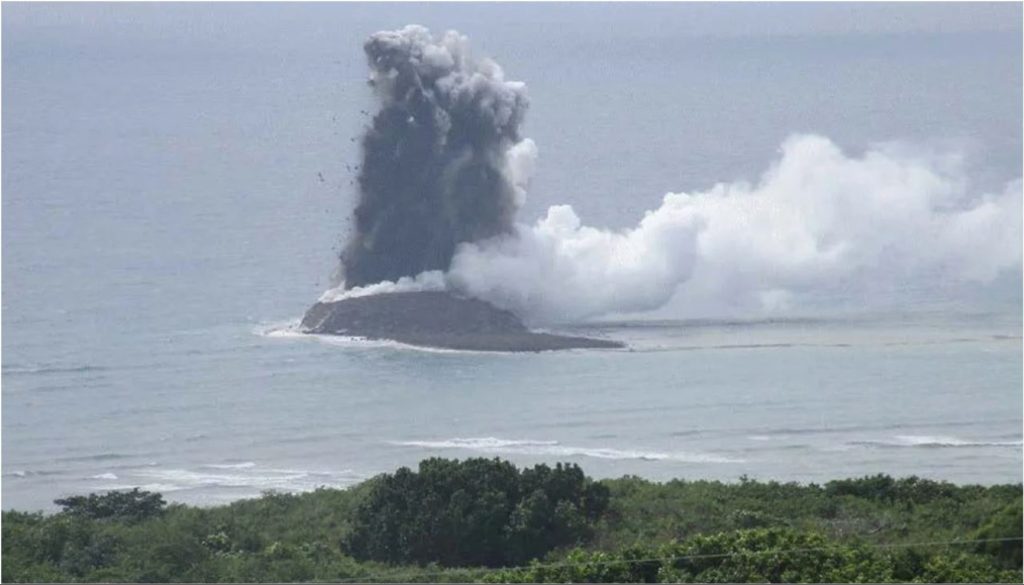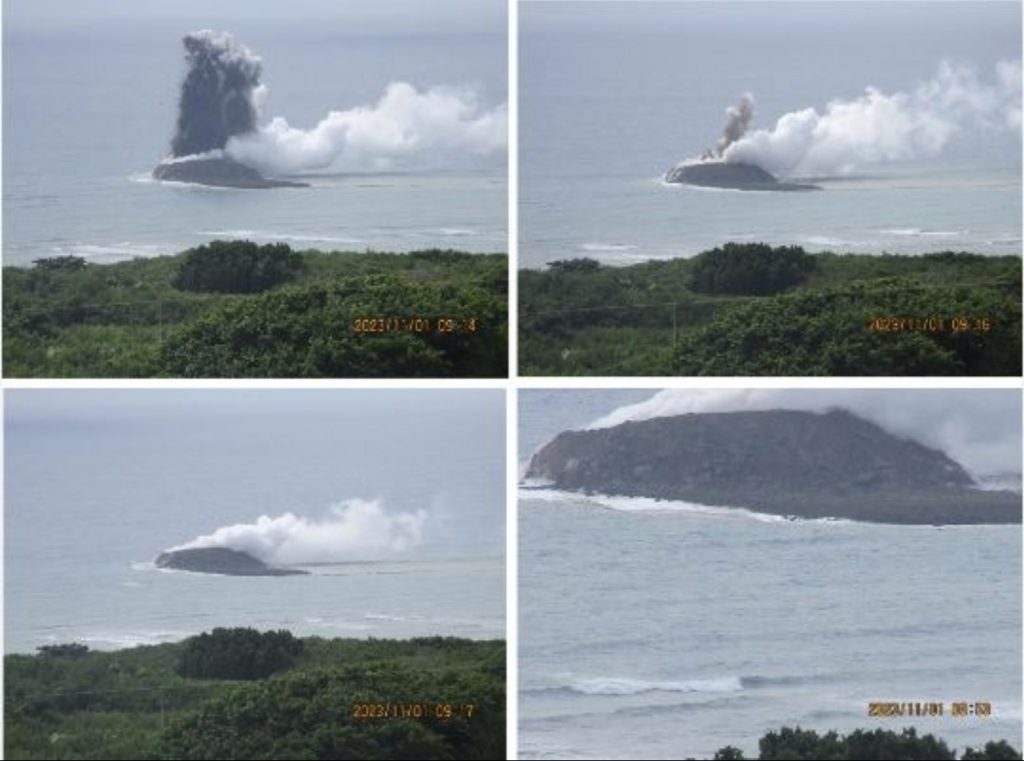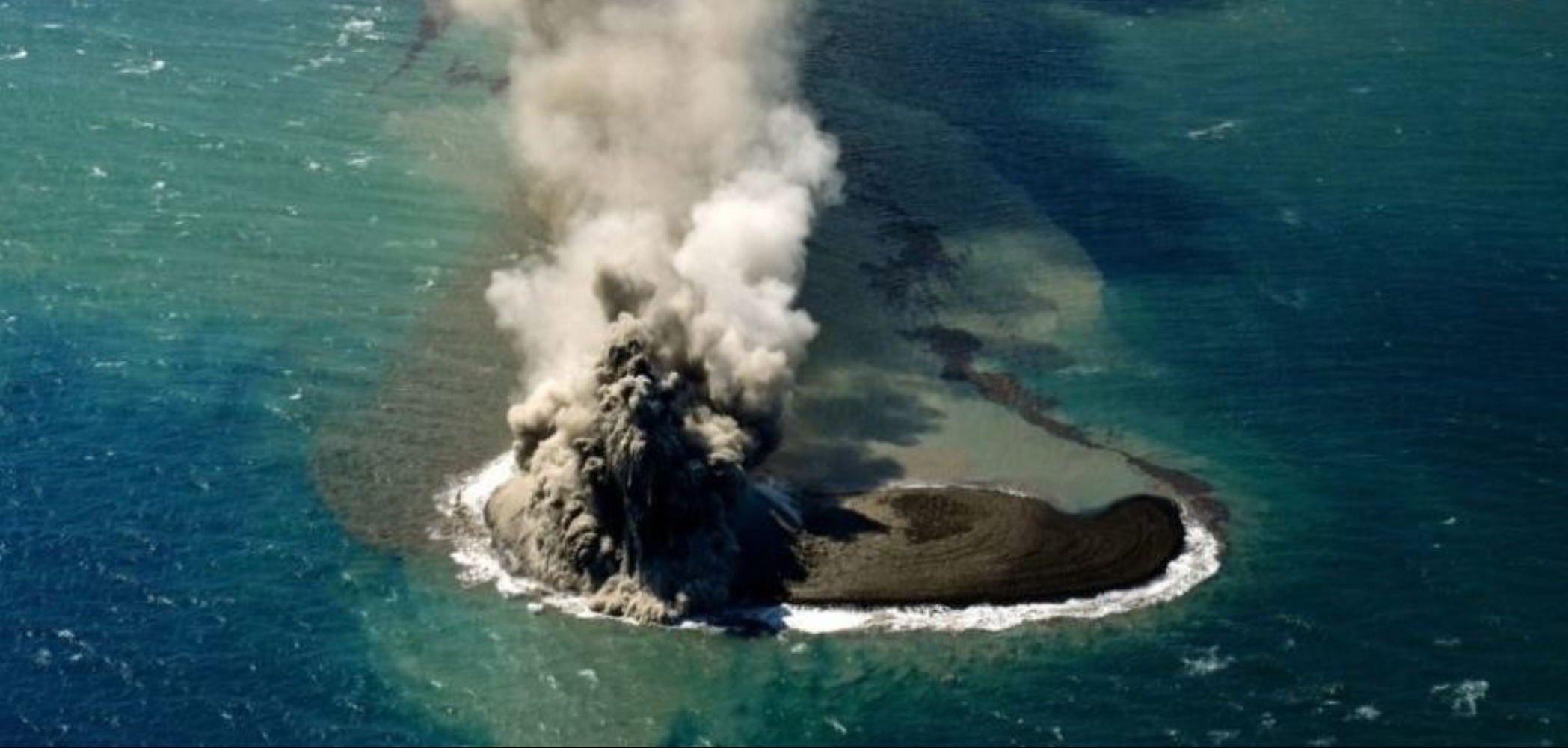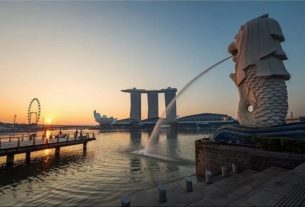Devanjana Mukherjee, Khabri Media
While it gains new islands, Japan occasionally loses them. Esanbe Hanakita Kojima, which was located 500 metres off the coast of Hokkaido, is thought to have slipped beneath the waves unnoticed in 2018.

Pic: Social Media
In a powerful display beneath the ocean’s surface, a significant volcanic eruption on October 30 resulted in the formation of an island along the coast of Japan. A recent video captures a spectacular volcanic eruption in the Pacific, leading to the creation of the world’s newest island off the shores of Japan.
To subscribe please click tau.id/2iy6f and access our live channel.
DON’T MISS: Visa-free travel to Thailand
The country’s meteorological agency observed intense eruptions, covering large sea areas with magma that eventually cooled and solidified into a rock surface. The birth of a new island off Iwo Jima due to an undersea volcano’s eruption has people left perplexed. Volcanologist explored the island’s composition to determine how long it could last.
Despite the awe-inspiring nature of this phenomenon, experts caution that the newfound landmass may not last long. The unnamed undersea volcano, located roughly 1 kilometre off the coast of Iwo Jima – known as Ioto in Japan, part of the Ogasawara island chain in the western Pacific, and 1,200 kilometres south of Tokyo, erupted on October 21.

Pic: Social Media
Fukashi Maeno, an associate professor at Tokyo University’s earthquake research institute, said he had confirmed that phreatomagmatic eruptions – a type of explosive eruption that results from magma interacting with water – had occurred about a kilometre off Iwoto, forming a landmass of about 100 metres in diameter.
Trending News: Noida Airport to have Japanese colony
He also witnessed large rocks hurtling through the air and bands of brown pumice stones floating in the sea, which had changed colour as a result of the eruption. Maeno, who flew over the site at the end of October, told the Kyodo news agency that plumes of smoke and ash of more than 50 metres high rose every few minutes.
The fragile nature of its composition, described as “crumbly” by Usui, makes it susceptible to erosion by ocean waves. Ongoing analysis by experts includes an examination of the deposits to determine exactly what it is made of.
It is still possible that the island could survive for a more extended period if it is composed of more durable materials such as lava, as opposed to the easily weathered volcanic rocks like pumice. Two similar undersea eruptions have been documented in recent years, but the emergence of a distinct landmass is a rare occurrence.
Earlier this year, geographers said the Japanese archipelago, previously thought to comprise four main islands and about 6,000 much smaller and mostly uninhabited ones, was actually made up of double numbers. Using digital mapping technology, the Geospatial Information Authority of Japan said it had identified a total of 14,125 islands – 7,273 more than previously thought.




